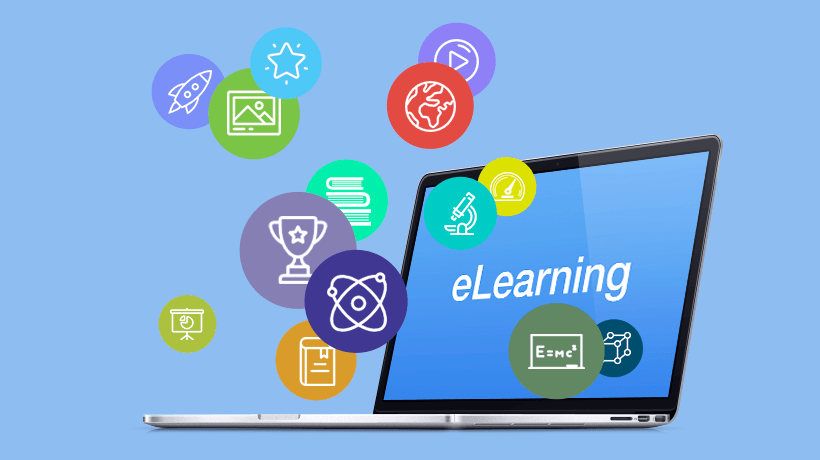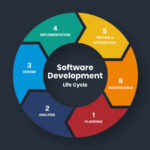If you have ever been assigned the task of organising a training program in your company, you know how daunting this task can be. From identifying skill gaps and keeping tabs on the performance of every employee to making the training engaging and taking feedback to make corrections in future training programs, there is always a lot to do in a training program.
Organisations usually have a plan for employee training and orientation to ensure that workers are adequately taught any specialised knowledge or safety requirements relevant to their employment. Throughout the whole employment lifecycle, many firms promote or mandate continued education. It keeps employees abreast of modern trends and helps them continually hone their talents, and in some professions, it is required by law. A Learning Management System, or LMS, helps streamline and expand your company’s training materials and course offerings. Do you need one for your business?
The eLearning experts are looking for ways to build a solid, step-by-step approach to developing a reliable management system. It will assist enterprises in selecting the best solution to meet their needs. The most important thing here is to know when your business needs Learning Management Software, as currently, LMS has become the new normal for trainers who are serious about making the most of their training process. So, in this blog post, we will look at some signs that make it clear that your business needs a robust and reliable Learning Management Software solution.
4 Key Signs Your Business Needs Learning Management Software
Usually, an LMS is associated with the need for online training. These top four signals indicate that an LMS is the best instrument for the task and that you should use it if you have to complete your training online.
Training Is Proving To Be a Money-guzzler
Traditional training is practical for businesses with few employees or those who don’t need to train their staff constantly. It could become unsustainable and strain your finances if anything else happens. Not to mention, the hassle involved in setting up classroom training is incalculable.
You can reduce the cost of training by using Learning Management Software for Energy. This helps to eliminate all expenses related to lodging, transportation and venue. The cost of hiring instructors is also significantly reduced. An LMS removes the conflict between deciding between employee development and financial well-being for businesses that are still expanding or for whom training expenditures are exorbitant.
Employees Aren’t Using the Current Training Program
If your current training program lacks proper organisation and if the content of the training is not up to mark, none of the employees will be interested in joining the training program. They might sit in the training program because it has been made necessary by the company, but they will not learn anything. The feedback could have been more favourable even when they enrolled in a course or attended a conference.
In most traditional training programs, businesses never see noticeable results like increased productivity, increased sales or improved conversion rate. With features of Learning Management Software for Energy, you can make the training program more engaging. You can use videos, gamification, puzzles and quizzes to enthral employees.
The Training Program Is All Over the Place
Here is what a traditional training program might look like: videos and PowerPoint presentations are copied from the internet and sent through email to employees without guidance or instructions. Even the employees need to open the email in this scenario, defeating the entire purpose of setting up a training programme.
If the elements of your existing training programme are similar to those of a Learning Management System, it’s time to switch to a Learning Management System that can provide a centralised system for your training programmes.
An LMS can quickly end all this chaos by helping you organise and structure training-related content into world-class courses. You can even use the training management platform to build a micro-learning library for all your organisation’s employees.
There Is No Tracking System
You won’t be able to tell if people are attending training if there isn’t a proper training method. You need to figure out which details people need to comprehend. You also need to find out if the materials are engaging for them or at the proper level of difficulty.
Fortunately, employing an LMS also has the benefit of providing assessment and reporting capabilities. Include evaluations that go beyond the common quizzes to assess employee growth accurately. In addition to testing employee knowledge, interactive movies, games, branching situations and simulations can offer immediate feedback. Reporting tools will provide in-depth information about participation, engagement and completion rates. To put it another way, a clear understanding of what’s working and what isn’t can help refine your instruction.
Wrapping Up!
Training a modern, fast-paced workforce requires investing in online corporate training. All areas of learning and development can see the advantages of LMS training in particular.
An LMS will simplify your training process thanks to its engaging and efficient delivery methods, comprehensive training assessment features and tracking capabilities. Naturally, it will accomplish all that while drastically reducing the time and cost associated with training.
The learning platform from 3t Transform allows for personalised and automated learning experiences in the flow of work to promote growth, organisational performance and financial success. Traditional LMS and enterprise learning technologies have dictated how people learn, with formal courses pushed down from the top.







